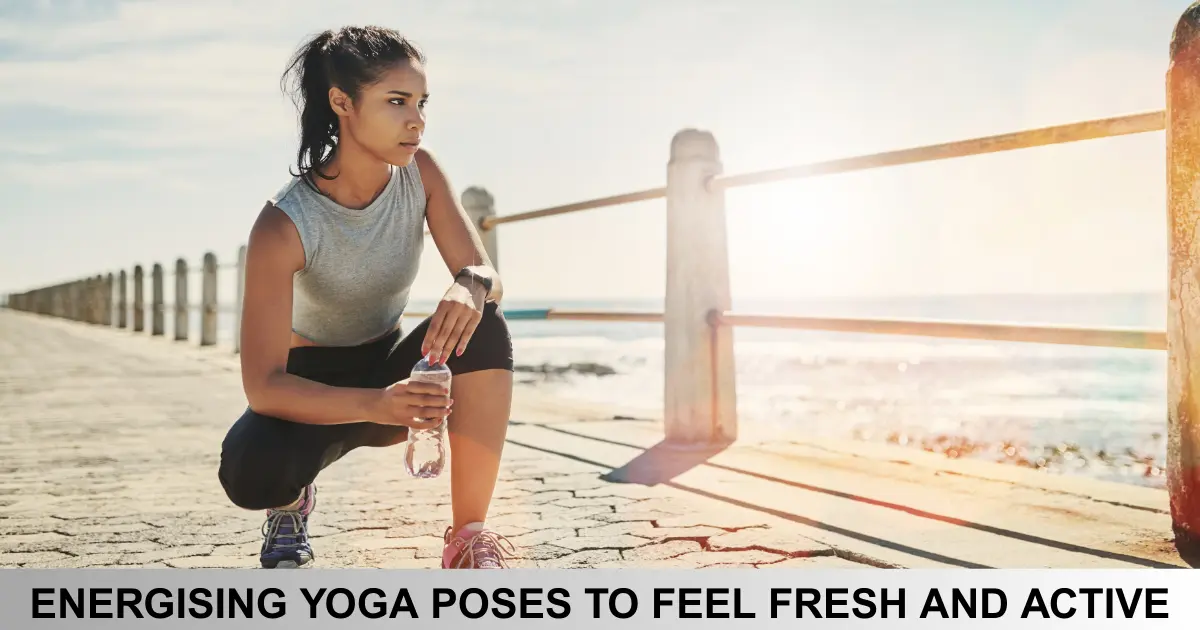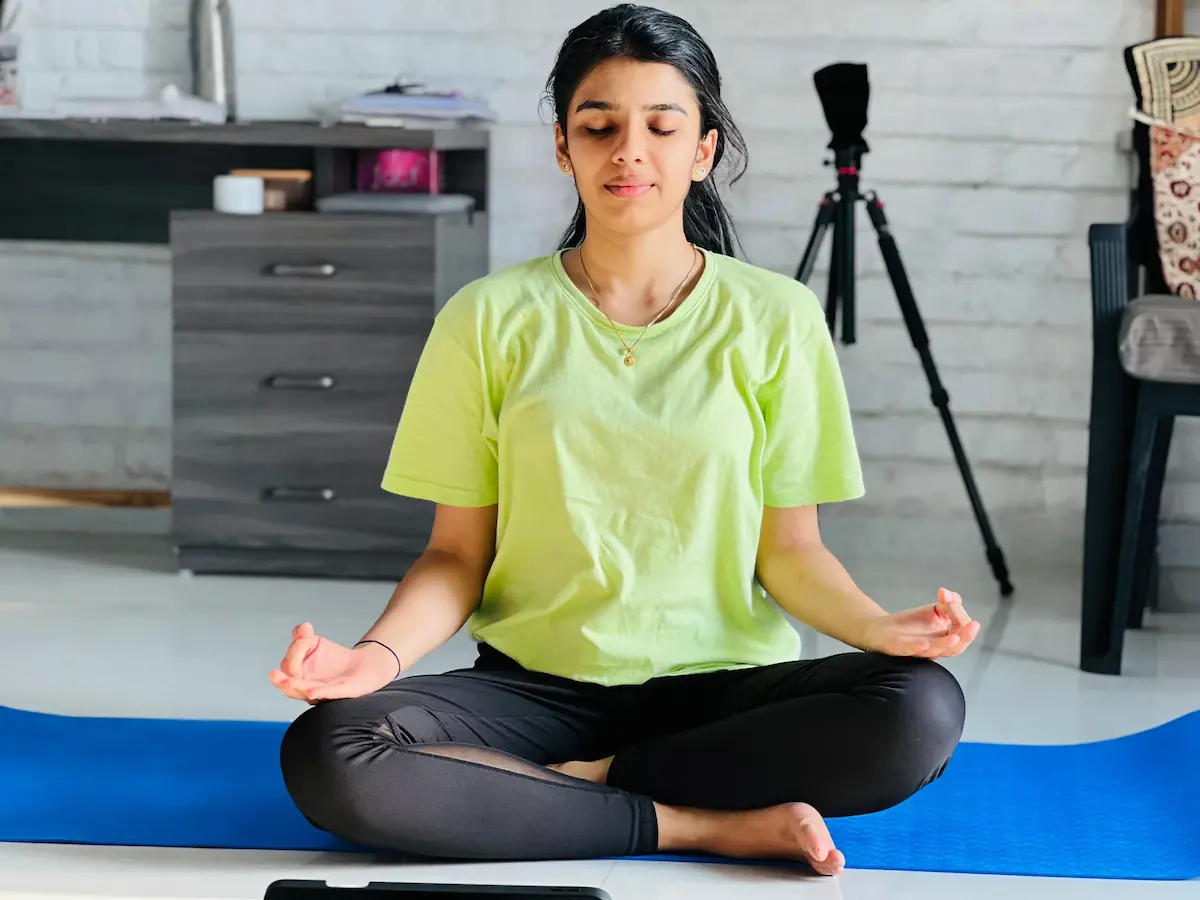Starting your day with yoga at home is a simple and powerful way to boost your energy, shake off stiffness, and clear your mind. Even a short routine can help you feel more awake, focused, and ready for anything. Here are eight beginner-friendly yoga poses to help you feel fresh, active, and positive no experience needed!
Ustrasana (Camel Pose)
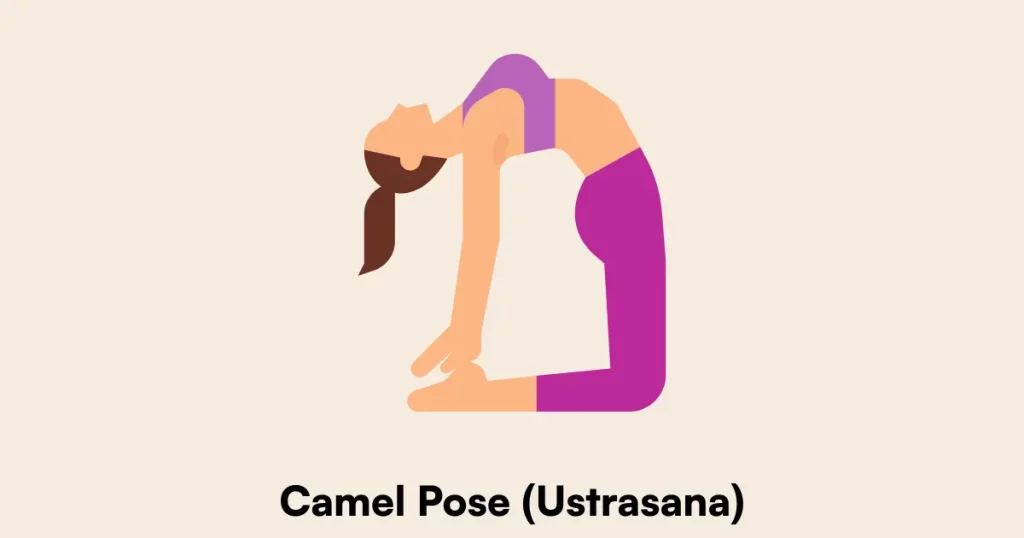
How to Do It:
- Kneel on your mat with knees hip-width apart.
- Place your hands on your lower back for support.
- Gently lean back, reaching your hands to your heels.
- Lift your chest and look up, keeping your neck relaxed.
- Hold for a few breaths, then return slowly to kneeling.
Benefits:
- Opens the chest and lungs for deeper breathing
- Improves posture and boosts circulation
Tips:
If you feel any discomfort in your lower back or neck, keep your hands on your hips and only lean back as far as comfortable.
Adho Mukha Svanasana (Downward-Facing Dog)
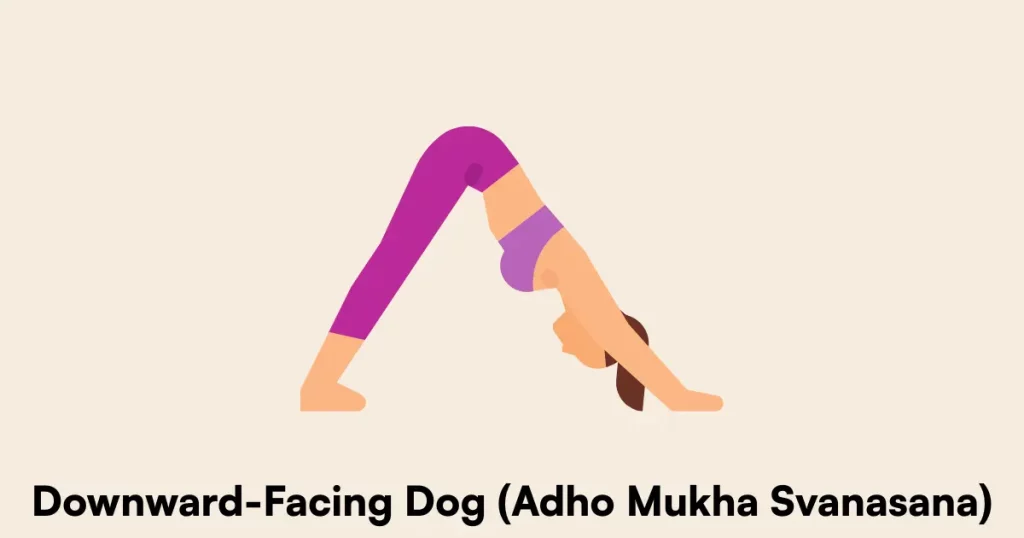
How to Do It:
- Start on hands and knees.
- Tuck your toes and lift your hips up and back, forming an inverted “V”.
- Press your hands firmly into the mat and reach your heels toward the floor.
- Relax your head and neck.
Benefits:
- Stretches the whole body and relieves tightness
- Increases blood flow and wakes up the mind
Tips:
Bend your knees slightly if your hamstrings feel tight.
Anjaneyasana (Low Lunge)
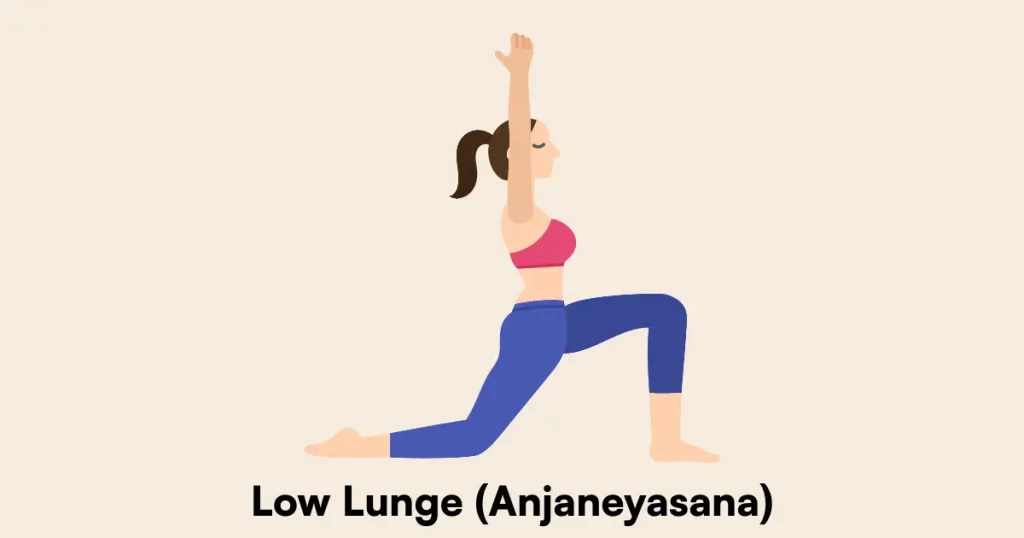
How to Do It:
- Step your right foot forward between your hands from a kneeling position.
- Lower your left knee to the mat.
- Lift your arms overhead, reaching up and opening your chest.
- Hold, then switch sides.
Benefits:
- Opens hip flexors and stretches legs
- Relieves stiffness from sitting
Precautions:
Keep your front knee above your ankle to protect your joints.
Tadasana (Mountain Pose)
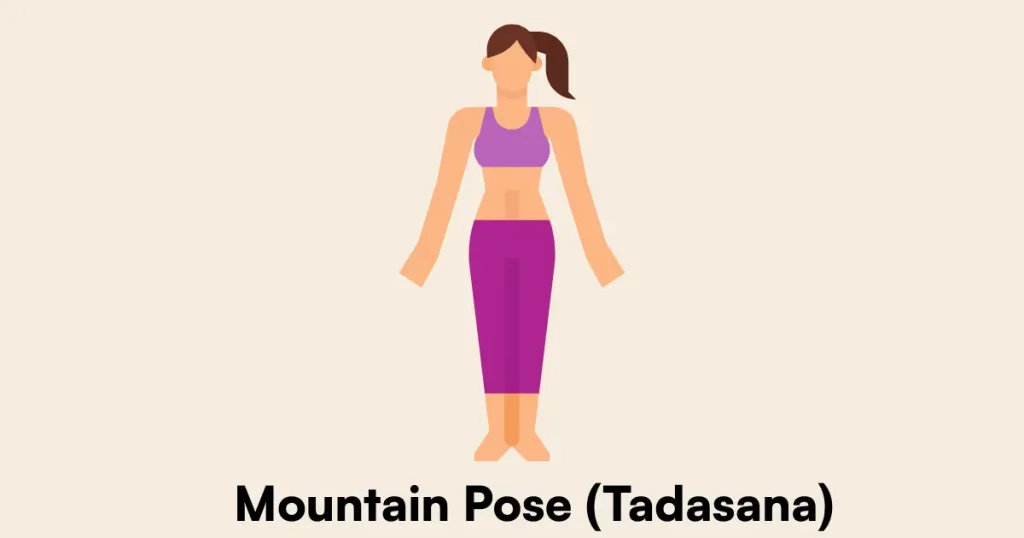
How to Do It:
- Stand with feet hip-width apart, arms at your sides.
- Spread your toes and ground evenly through your feet.
- Lengthen your spine and reach the crown of your head upward.
- Breathe deeply and relax your shoulders.
Benefits:
- Improves posture and balance
- Calms the mind and increases focus
Tips:
Engage your thighs and lift your chest for better alignment.
Phalakasana (Plank Pose)
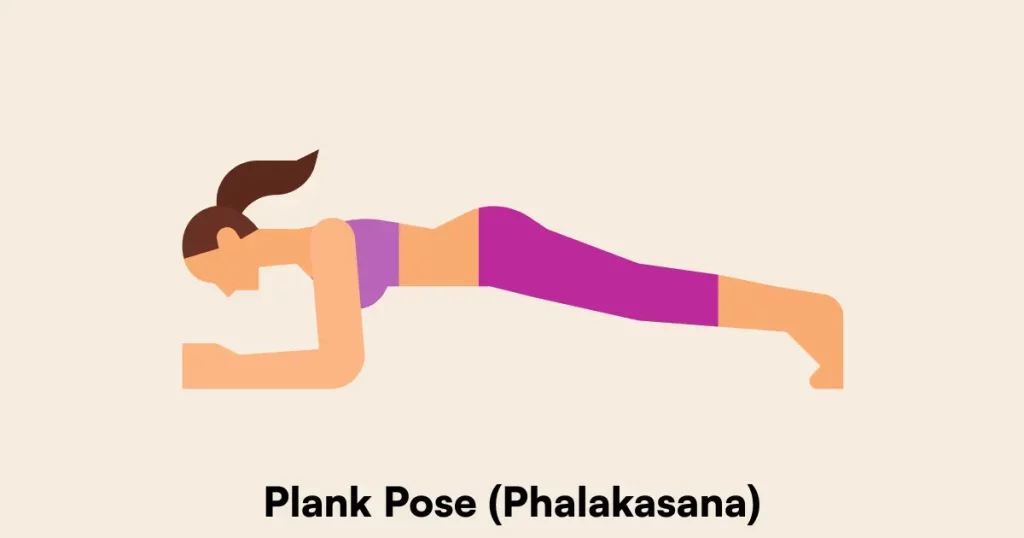
How to Do It:
- From all fours, step your feet back and straighten your body.
- Keep your wrists under your shoulders and your body in a straight line.
- Hold your core and legs strong.
Benefits:
- Strengthens the core, arms, and legs
- Builds stamina and mental focus
Precautions:
Avoid letting your hips sag or rise too high.
Uttanasana (Standing Forward Bend)
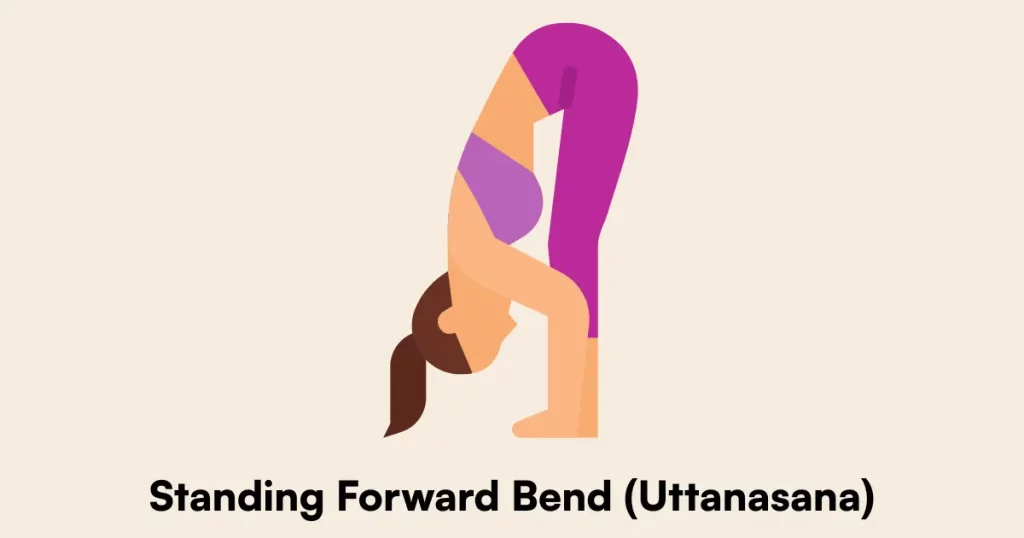
How to Do It:
- Stand tall, then hinge at your hips and fold forward.
- Let your head hang and relax your neck.
- Keep a slight bend in your knees if needed.
Benefits:
- Stretches hamstrings and spine
- Boosts blood flow to the brain, clearing mental fog
Tips:
Rest your hands on your shins or a block if you can’t reach the floor.
Urdhva Mukha Svanasana (Upward-Facing Dog)
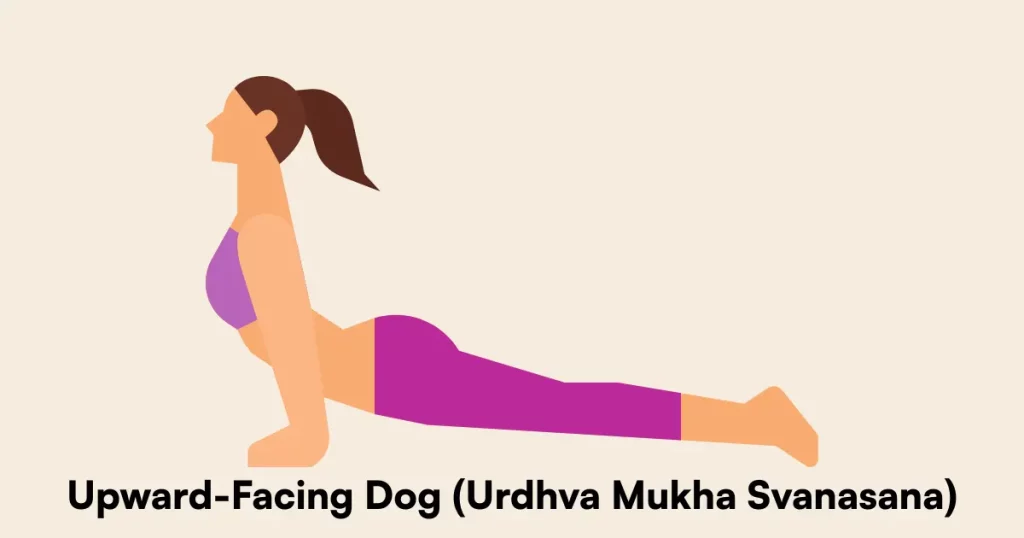
How to Do It:
- Lie on your stomach, place your hands under your shoulders.
- Press into your palms, lifting your chest and thighs off the mat.
- Keep your shoulders relaxed and look forward.
Benefits:
- Opens the chest and strengthens the spine
- Improves posture and energy
Precautions:
Don’t lock your elbows; keep them slightly soft.
Urdhva Hastasana (Upward Salute)
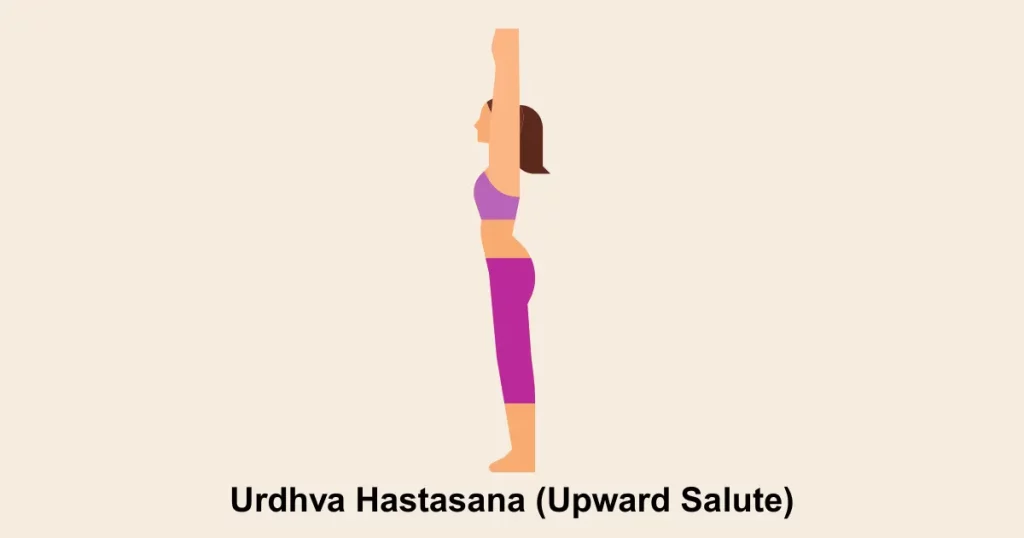
How to Do It:
- Stand in Mountain Pose.
- Inhale and sweep your arms overhead, palms facing each other.
- Reach up through your fingertips, lengthening your whole body.
Benefits:
- Stretches the shoulders and spine
- Refreshes your energy and relieves tension
Tips:
Keep your shoulders away from your ears as you reach up.
- Beginner Yoga Poses for Stress Relief
- Why Your Mind Wanders During Meditation
- Yoga vs Gym: Which is Better for Mental Health?
Conclusion
Yoga is a wonderful way to start your day or shake off an afternoon slump. These simple poses can help you feel more awake, flexible, and positive—right from your living room. Try practicing daily, even if it’s just for a few minutes, and notice how much fresher and more active you feel!
Frequently Asked Questions
Q: Do I need any special equipment to start yoga at home?
A: No, just a comfortable mat or a soft surface is enough for these poses.
Q: How long should I hold each pose?
A: Start with 3–5 breaths in each pose. As you get comfortable, you can hold them longer.
Q: Can beginners do these poses safely?
A: Yes, these poses are beginner-friendly. Always listen to your body and skip any pose that feels uncomfortable.
Q: When is the best time to practice yoga for energy?
A: Morning or early afternoon is ideal, but you can practice whenever you need a boost.
Q: What should I wear for yoga?
A: Wear comfortable, stretchy clothes that let you move freely.
Try these energising yoga poses and enjoy a fresh, active start to your day!
